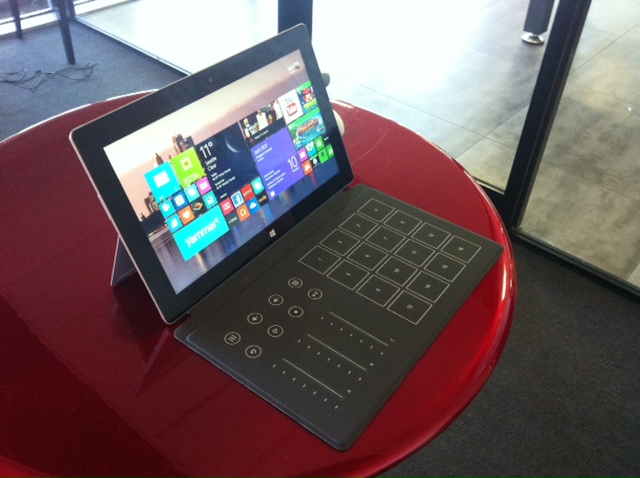Microsoft’s latest version of their Surface tablet computer is the company’s first attempt at executing Steve Ballmer’s device and services strategy. If the company succeeds, there are some interesting implications for the tablet computer market.
Currently Microsoft is on a worldwide PR campaign to promote their latest range of Surface tablet computers. Last week during the Sydney leg of their tour I had the opportunity for a hands on demonstration of the new devices with Jack Cowett of the product’s marketing team.
The Surface itself is an interesting device with some major upgrades and changes as Microsoft begins to understand the tablet market with the device having more memory, better processors and battery life – although the lack of a cellular version is going to hinder its adoption by the consumer and small business markets.
Devices and services
It’s in the device’s integration with Microsoft’s cloud and communication services where the long term vision, and real story behind the Surface lies.
Most obvious is the bundling of services with purchasers of a Microsoft Surface 2 or Surface Pro getting 200Gb of Sky Drive storage and a year’s free international calls included with the device.
It’s an early taste of how Microsoft can combine services and devices that leverage off their existing position in the marketplace.
While these incentives may not be enough to convince customers that the Windows systems are a better buy than Android or Apple devices, integrating these cloud services makes the computers more powerful devices.
Keyboards as blades
Equally interesting with the Surface, is Microsoft’s devices play with the range of Surface covers that the company is informally calling ‘blades’ – an unfortunate choice of name which will confuse conversations with many IT managers.

These covers dispense with the usual keyboard electronic layout with an underlying layout featuring a 1024 sensor pad that give the covers more potential than just being keyboards.
As part of the Microsoft marketing push to show this aspect off, the company has released a blade cover with a sound mixer layout and seeded the devices with various DJs under the banner of the Remix Project.
While the blade covers have applications as sound mixers and keyboards, the number and flexible nature of the 1080 built in sensors will see their application in other areas.
The way businesses have used tablet computers has taken manufacturers by surprise as Google’s Eric Schmidt told last week’s Gartner conference and Microsoft’s devices open up more industrial applications.
Already the medical industry is applying Windows based tablets as Microsoft are proud to show off.
Should third party developers be able to develop their own skins for Surface blade covers then Microsoft may have a killer industrial device that plugs into existing Windows based networks.
Added to Microsoft’s opportunity is the possibility of plugging Surface devices into the internet of everything giving business users direct access to the machines in their organisation.
Should Microsoft be able to capture a slice of these markets, it may well be a pointer for the company’s future in a post-PC world.
Regardless of how well Microsoft do with the internet of everything, the latest range of Surface tablets and accessories shows how the company is executing its strategy of becoming a devices and services company.

Leave a Reply